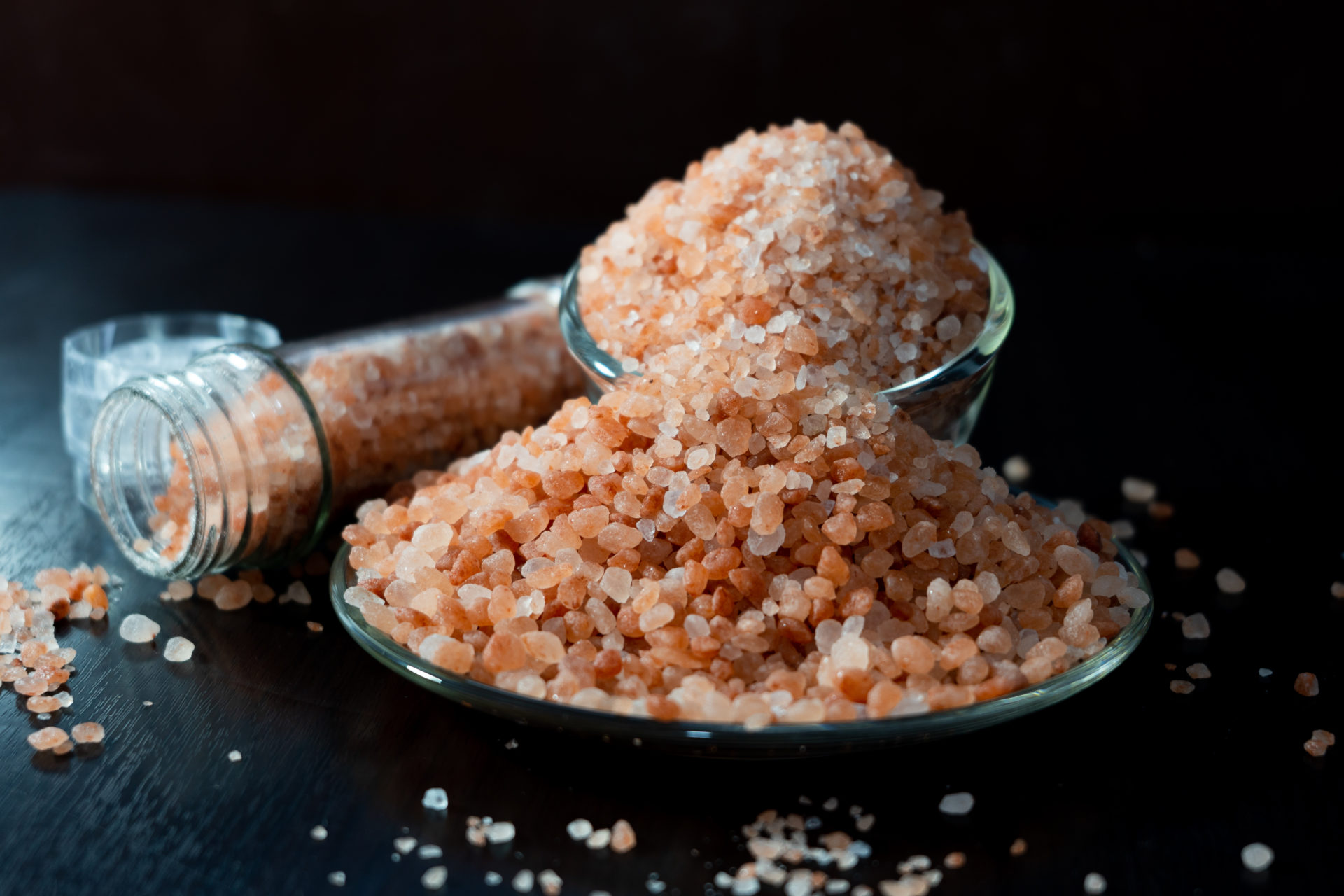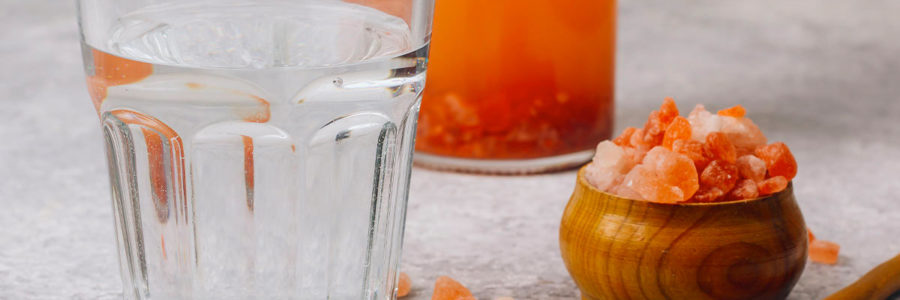What is Sole Water? There is no doubt that proper hydration is a crucial pillar of health, and yet it is so often ignored when it comes to simple daily habits. Today we explore a way to hack your hydration for about 1 cent per day: sole water.
![]()
This article has been medically reviewed by Dr. Charles Penick, MD![]()
What is Sole Water?
Sole water (pronounced so-lay) is water saturated with pink Himalayan salt. This mineral-rich drink is not simply adding a pinch of salt but rather absorbing as much of the natural salt as possible until it cannot absorb any more, which is 26% according to chemistry 1!
Technically, sole water is electrolyte-dense brine. As electrically charged beings, electrolytes are essential for human life. Electrolytes carry a charge, which becomes ionized when dissolved in water. In mineral-dense sole water, negative and positive ions are combined to create a charge, which helps the body absorb the minerals. This absorption promotes proper fluid balance in the body, which has many benefits 2.
The Benefits of Salt
Although salt is often demonized in the health industry, the benefits are profound if you consume the right kinds of salt. All refined (iodized table salt) should be avoided, as it is highly processed, void of most minerals (apart from sodium and chloride), and often contains anti-caking agents 3. Natural salt contains approximately 84 minerals 4. Although table salt is often fortified with iodine, it is not the natural kind that is readily bioavailable, like the iodine in foods 3. On the other hand, unrefined salt is loaded with minerals and has multiple benefits to the human body!
Due to its high mineral content, a good quality salt and drinking sole water has many benefits, including 5-6
- Promoting hydration
- Promoting detoxification
- Reducing muscle cramping
- Improving blood sugar levels
- Improving blood pressure levels
- Boosting energy
- Promoting healthy blood circulation
- Supporting weight loss
- Promoting healthy nails, skin, and hair
Although there are many kinds of natural salt (like Celtic or river salt), pink Himalayan salt is the only salt ever to have been the subject of comprehensive double-blind scientific research for its physical and psychological functions within the body 7.
DIY Recipe

Sole water is much more than adding a pinch of pink salt into a glass of water. To make sole water, you will need a mason jar with a non-metallic lid, lots of salt, water, and a bit of time.
Ingredients/ Equipment
- 1-2 cups of pink Himalayan salt
- Filtered water
- Mason jar
- A metal-free lid for the jar
Instructions
- Fill about ¼ of a glass jar with pink Himalayan salt.
- Add filtered water to fill the jar, leaving about 1 inch of air at the top.
- With a non-metallic lid on, shake the water gently, and then leave the jar on the counter overnight to dissolve.
- After about 12 hours, check on your water. If all but a little bit at the bottom of the jar is dissolved: your sole water is ready! If it is fully dissolved (with nothing left), then add a bit more salt and wait until only a tiny bit remains at the bottom. When all salt except for a little is dissolved, you know your water is saturated with salt.
How Much Do You Drink Daily?
Sole water is saturated salt water; only a tiny amount is needed daily. You can add one teaspoon of sole water to a glass of water in the morning to drink, or you can just swallow the teaspoon straight up. It is best consumed first thing before any other food or drink.
Do not use any metal spoon or lid to serve up your sole water to avoid interfering with the beneficial charge of the salt.
How to Store Your Sole Water
Sole water is naturally anti-bacterial due to its high salt content so you can keep it on the countertop or in a cupboard for months. Avoid contact with any metal instruments to avoid interfering with the natural charge of your mineral water.
Summary
Sole water is water completely saturated with pink Himalayan salt. It provides the body with highly mineralized water that can be consumed in small amounts daily. Sole water possesses a wide range of benefits, including; hydration, detoxification, and improving blood sugar and blood pressure levels.
Medical Disclaimer: This article is based on the opinions of the author. The information on this website is not intended to replace a one-on-one relationship with a qualified health care professional and is not intended as medical advice. It is intended to share knowledge and information from the research and experience of Cell Health News and its associates. This article has been medically reviewed by Dr. Charles Penick, MD, for the accuracy of the information provided, but Cell Health News encourages you to make your own healthcare decisions based on your research and in partnership with a qualified healthcare professional.
References
- Rumble, John R. CRC Handbook of Chemistry and Physics. CRC Press, 2021.
- “Electrolyte Drinks: Beneficial or Not?” Cleveland Clinic, Cleveland Clinic, 18 Sept. 2020, https://health.clevelandclinic.org/electrolyte-drinks-beneficial-or-not/.
- Katherine Zeratsky, R.D. “Is Sea Salt Healthier than Table Salt?” Mayo Clinic, Mayo Foundation for Medical Education and Research, 14 Sept. 2021, https://www.mayoclinic.org/healthy-lifestyle/nutrition-and-healthy-eating/expert-answers/sea-salt/faq-20058512.
- The Meadow. “Minerals in Himalayan Pink Salt: Spectral Analysis.” The Meadow, https://themeadow.com/pages/minerals-in-himalayan-pink-salt-spectral-analysis.
- Karppanen, Heikki. “Minerals and Blood Pressure.” Annals of Medicine, vol. 23, no. 3, 1991, pp. 299–305., https://doi.org/10.3109/07853899109148064.
- “Minerals: Their Functions and Sources.” Minerals: Their Functions and Sources | Michigan Medicine, https://www.uofmhealth.org/health-library/ta3912.
- Hendel, Barbara, and Peter Ferreira. Water & Salt: the Essence of Life, the Healing Power of Nature. Michaels Verlag, 2007


